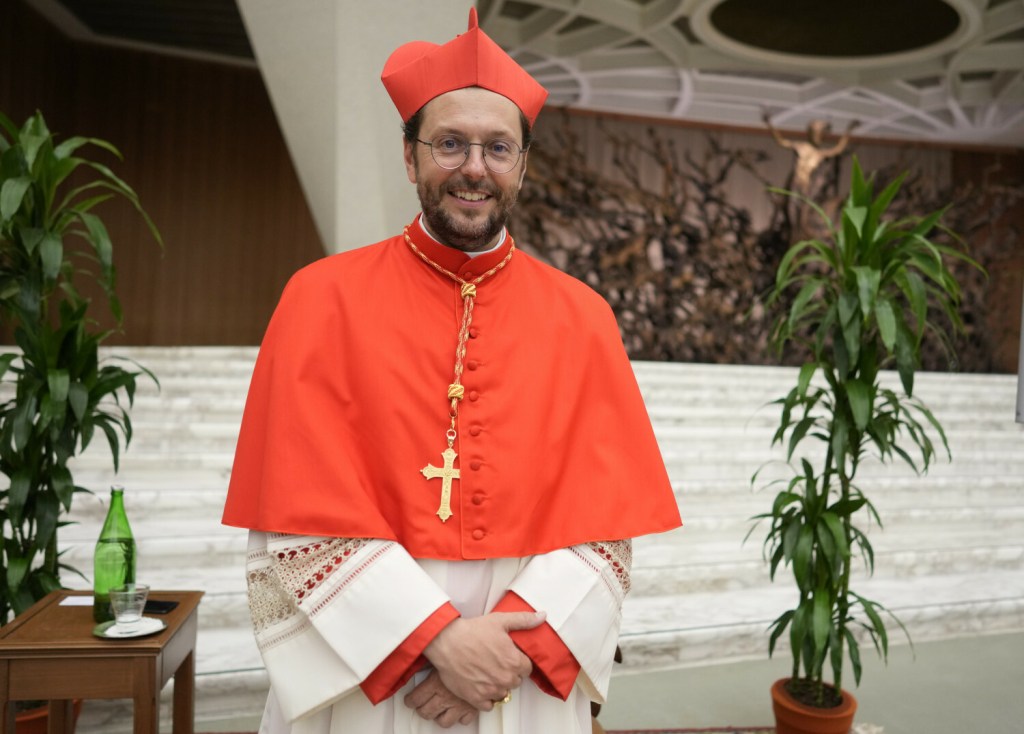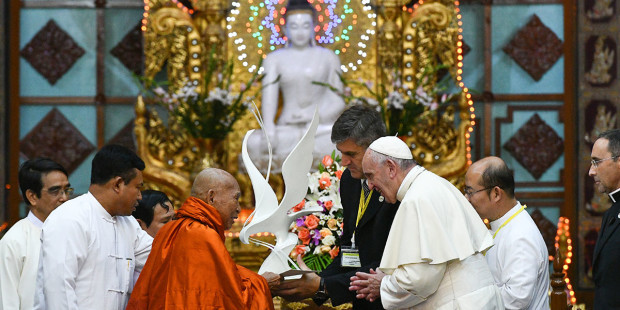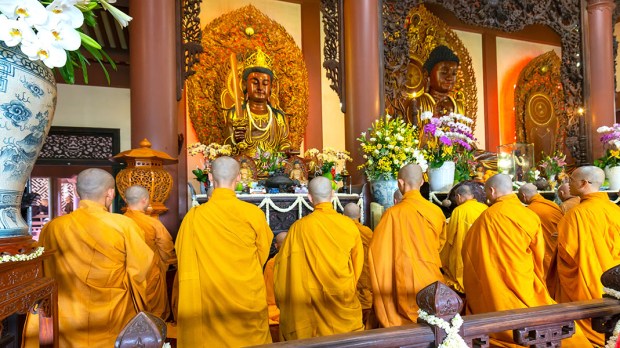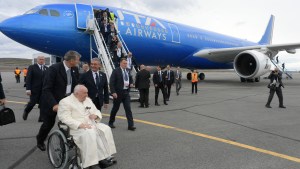From August 31 to September 4, 2023, Pope Francis will visit Mongolia, a country where Buddhism is the religion of almost half the population. The Pontiff will be keen to further dialogue between Christians and Buddhists, although this could prove a delicate task. This is evident in the tensions that currently exist between the Church and certain sectors of Buddhism in Asia.
Good relations in Mongolia
In May 2022, the Apostolic Prefect of Ulaanbaatar, Bishop Giorgio Marengo, visited Pope Francis at the Vatican to mark the 30th anniversary of the arrival of the first Christian missionaries in Mongolia in 1992. To invite the Pope to visit his country, he came to Rome accompanied by one of Mongolia’s most senior Buddhist dignitaries.
It was in the presence of this guest that Bishop Marengo learned that the Pope had decided to make him a cardinal. “It is […] significant that we rejoiced together at this news, and it shows how much the Church in Mongolia is a global reality, which seeks to walk with all people of good will and is committed to dialogue,” the Italian said at the time.

“Our relations with Buddhists are very good,” says Sister Lieve Stragier, a Belgian missionary from the De Jagt congregation who has lived in Mongolia for 15 years. She believes that the Pope’s visit could strengthen this good understanding, not least by helping to distinguish Catholics from Protestant or evangelical movements. These latter are perceived as highly proselytizing and are “aggressive” towards Buddhists just as much as they are towards Catholics.
Dialogue with the “Buddhist world
An interfaith meeting between Pope Francis and Mongolian Buddhist authorities is scheduled for September 3. The Pontiff will surely be keen, as he always is, to build bridges between the two religions and to advocate the “human brotherhood” that unites them.
Since the beginning of his pontificate, the Argentine Pope has visited traditional Buddhist countries five times: South Korea, Sri Lanka, Burma, Thailand, and Japan. That’s a remarkable figure, given that in many of these countries — including Mongolia — the Catholic population is very small, sometimes less than 1% of the population.

In his dialogue with Buddhism, Francis is following in the footsteps of his predecessor John Paul II. The Polish Pontiff was first to establish genuine relations with Buddhist dignitaries, notably during his trips to Japan in 1981, and Korea and Thailand in 1984. John Paul II realized that the two religions could find fruitful common ground through their convergence on the rejection of Western materialism and the defense of spirituality and family values.
The shadow of the Dalai Lama
During his pontificate, John Paul II became very close to Buddhism’s most famous figure, the Dalai Lama. In particular, he invited him on several occasions to the Assisi meetings.
However, relations with the spiritual leader have suffered greatly in recent years. The Buddhist leader is a political opponent of Beijing and he condemns the Chinese government’s persecution of Tibetans. Consequently, his relationship with the Catholic Church is a collateral victim of the diplomatic evolution of relations with China under the pontificates of Benedict XVI and Francis.
In 2007, when a visit was scheduled, China threatened Benedict XVI with serious “repercussions” if he were to welcome the Dalai Lama, and the German Pontiff eventually abandoned the meeting. A year earlier, he had received the Buddhist leader in a private audience, at the end of which the latter had declared that he was campaigning for “autonomy worthy of the name” for Tibet, and had raised the subject with the Pontiff.
In 2014, Pope Francis also chose not to meet the Dalai Lama at a peace summit in Rome, and did not invite him when he organized an interfaith climate summit in 2022 or with Nobel Peace Prize winners in 2023.
The tradition of Buddhism to which this spiritual leader belongs, the “vajrayana” branch — so-called “tantric” Buddhism — is the same as that practiced in Mongolia. His involvement in Mongolian religious affairs — he has visited the country on numerous occasions — is thus a source of tension with China.
In 2016, the Dalai Lama announced that he had discovered in Mongolia the new “Jebtsundamba Khutughtu,” also known as “Bogd Gegeen,” the 10th reincarnation of a Buddhist sage considered to be the country’s most important religious leader and the third most important member of the Tibetan Buddhist family. In protest, China closed access roads to Mongolia at the time.
According to a diplomatic source, the abbot of Gandan, who heads one of the country’s most important monasteries in Ulaanbaatar, requested a meeting between Pope Francis and the 10th Bogd on the occasion of the interfaith summit on September 3. The request was politely refused by the Holy See. The child chosen in 2016 by the Dalai Lama to be the Bogd is now 8 years old, belongs to the Mongolian upper middle class, and holds an American passport.
This refusal is said to have created a certain amount of tension with the Gandan monastery, whose representatives are nevertheless invited to take part in the meeting. The monastery is one of a number of Buddhist institutions in Mongolia that have consistently refused to enter into dialogue with the local Catholic Church, I.MEDIA has learned from several sources.
Good relations in many Buddhist countries
Tibetan Buddhism — Vajrayana — represents only one branch of Buddhism, however, and is found mainly in the Indian foothills of the Himalayas, in Nepal, Chinese Tibet, and Bhutan, regions with which the Holy See has almost no relations. In this respect, the Pope’s visit to Mongolia is particularly significant, as it marks the first official visit by a pontiff to a country belonging to this spiritual tradition.
In contrast, Pope Francis has recently visited several important Mahayana and Theravada Buddhist countries. In particular, he met Mahayana Buddhist representatives in Japan and South Korea, and Theravada Buddhists in Sri Lanka, Burma, and Thailand. Unlike Tibetan Buddhism, where the reincarnation of Buddha into the Dalai Lama makes the latter the supranational leader — like a pope — of his branch of Buddhism, the Mahayana and Theravada branches of Buddhism are based on more local, even national, hierarchies.
The Church’s relations with these Buddhist currents therefore often depend on the national context. They can be very good — in Thailand, Japan, and South Korea, for example. In Sri-Lanka, local religious leaders recently walked hand in hand to denounce the government’s faults.
Buddhist China, the great absentee
The situation can sometimes be more tense, as when the Pope met with Burma’s Buddhist leaders in 2017. At the time, the Pontiff was forced not to mention the extortions and persecutions perpetrated in this country against the Rohingya minorities or the Karen, an ethnic group that includes many Catholics. Many of the country’s Buddhist leaders openly support the junta’s policies.
Finally, the Holy See is struggling to reach the world’s largest Buddhist community, that of China, where the teachings of Buddha, after almost disappearing under the Cultural Revolution, have been reinstated as part of the national heritage. But Buddhism has also become a powerful ally of the Chinese government, and seems to play no part in the attempts at rapprochement initiated by the Holy See in recent years.



